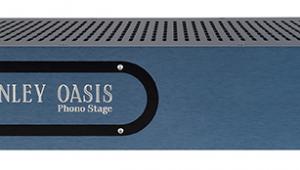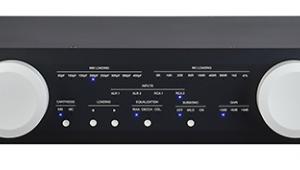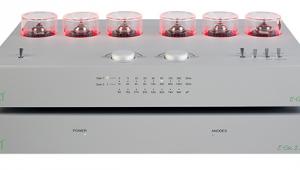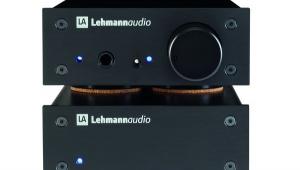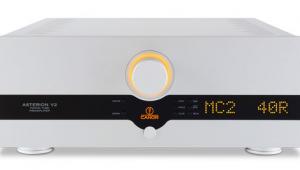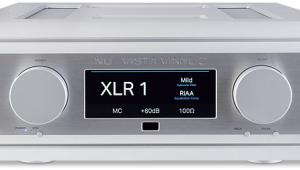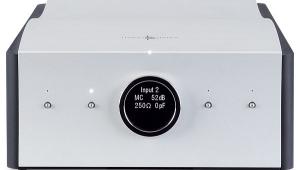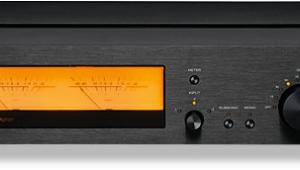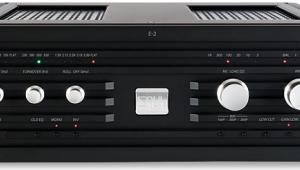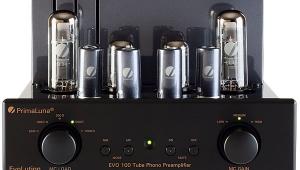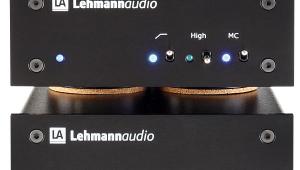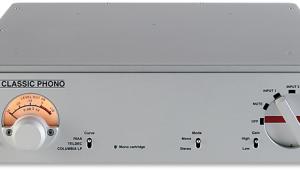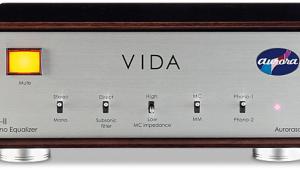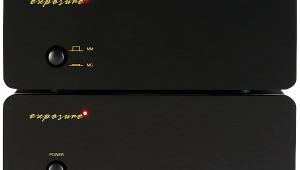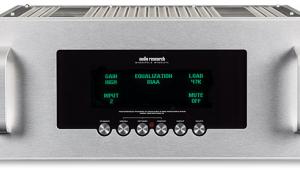Parasound Halo JC3 Junior phono stage

 ‘Junior’ in name and certainly less substantial in build than its flagship stablemate, this latest take on the JC3 theme turns out to be an even more flexible MM/MC phono stage
‘Junior’ in name and certainly less substantial in build than its flagship stablemate, this latest take on the JC3 theme turns out to be an even more flexible MM/MC phono stage
Does the world really need another phono stage? Back in the late 1980s the Michell ISO was a rare standalone product, but since then there has been a steady stream of the things, multiplying in numbers like Tribbles on Star Trek’s USS Enterprise. We’re now at the point where it feels as though there are as many designs on sale as there are people to buy them – so any new entry has to have a compelling raison d’être.
In the case of Parasound’s £2299 Halo JC3 Junior, it qualifies on account of family ties, with its big brother being the excellent £3999 JC3+ [HFN Oct ’15]. The latter gives the sort of performance that some rivals struggle to beat at twice the price, so with its common parentage there’s a sporting chance this new baby will be good. Welcome then, little fella!
A Lifetime In Hi-Fi
Although not quite at the point of being accosted in his local shopping mall for an autograph, Parasound’s designer John Curl is well known and respected in the US audiophile community. He’s worked at the top of the American hi-fi industry since the 1970s, during which time he created classics such as the Mark Levinson’s JC-2 and the SOTA head amplifier, as well as working for Constellation Audio, Audible Illusions and his own Vendetta Research.
John started his career at Ampex designing tape and video machines, then built sound systems for The Grateful Dead, no less. Since he met Parasound’s Richard Schram in 1989 he has produced the company’s high-power amplifiers, and much more. The JC3+ was his work, and now the Junior brings his philosophy to a wider and more price-conscious market. As Parasound’s most accessible phono stage it promises a generous taste of high-end vinyl sound at a saving of nearly £2000.

The Junior treads a skilful line between convenience and flexibility, for unlike many phono stages, it doesn’t offer cartridge matching via a plethora of fiddly DIP switches. Instead, there’s a small section of the rear panel that offers a choice between gain of +40dB, +50dB or +60dB in unbalanced mode (+46dB, +56dB and +66dB balanced) alongside another switch offering variable or fixed impedance loading. The fixed setting is a standard 47kohm, while the variable offers a range between 50 and 550ohm via a small stereo trimpot. The rear panel also helpfully notes that MC cartridges typically require +60dB gain and MMs +40dB, while the middle setting better suits high output MCs or abnormally low output MMs.
This, and the fitment of balanced (Neutrik) XLR outputs, are effectively the only ‘deluxe’ touches you get for your money. Parasound’s JC3 Junior still looks like a quality product, but anyone coming from the JC3+ can tell it’s not quite as luxuriously appointed. The alloy fascia is classy and its steel casework is really well finished in a choice of silver or black, and there’s a rack-mount kit available should you wish to use it inside a recording or mastering studio.
Yet the front panel is very much a case of ‘less is more’ while hosting just power and mono buttons – albeit the two most useful things you can have on a phono stage aside, perhaps, from ‘mute’. A mono facility makes the best of legacy, pre-stereo recordings, of course. On standby the blue power LED is dimmed while switching the unit on brings it up to full brightness after a short start-up period.
Inside, things are neatly laid out, with a sprinkling of audiophile components including Vishay Dale resistors, high-speed/soft-recovery bridge rectifiers and common-mode inductors, all mounted on Carl Thompson-designed PCBs. The same premium RelCaps are used in the RIAA network as John Curl employs in his famous Vendetta phono stage, while Parasound’s Richard Schram says the Junior uses: ‘the best-sounding and quietest IC op-amp that John Curl recommends’. Both inputs and outputs are direct coupled, with DC servos used to prevent any offset voltage at the output, the company says.
![]() Family Likeness
Family Likeness
Having heard the JC3+ at length, I knew roughly what to expect from the Junior and wasn’t disappointed. There’s a distinct family sound, as you might assume, and Parasound’s entry-level phono stage doesn’t stray from the ‘clean and open’ formula of its pricier siblings. The stereo soundstage is well proportioned and clearly defined, with strong image location and a good sense of stereo width and depth. Tonally things are smooth and balanced, with no obvious peaks and troughs, and the same slightly well-lit upper midband that shines a crisp white light on the presence band.
The Junior is less detailed and insightful than the JC3+, but its subtly more romantic and hazy sound is by no means taxing on the ear. In the great phono stage scheme of things – when you consider the romantic sound of some tube designs on the one hand, and the archetypal crisp, spry and etched solid-state sound on the other – the Junior errs towards the latter, but not by a huge margin. Both tonally and in terms of its wider musical performance, it’s quite a middle-of-the-road performer.

